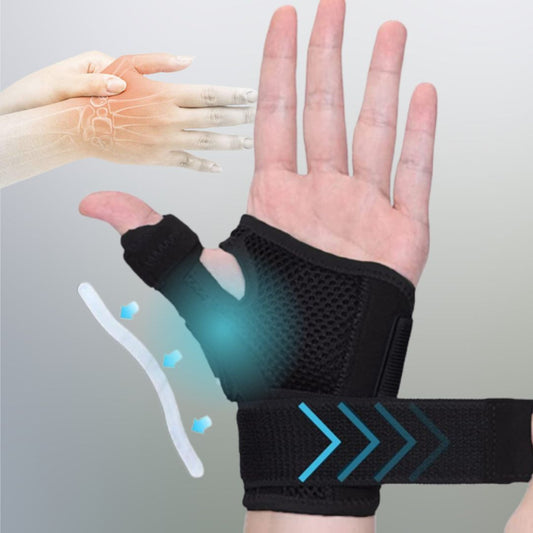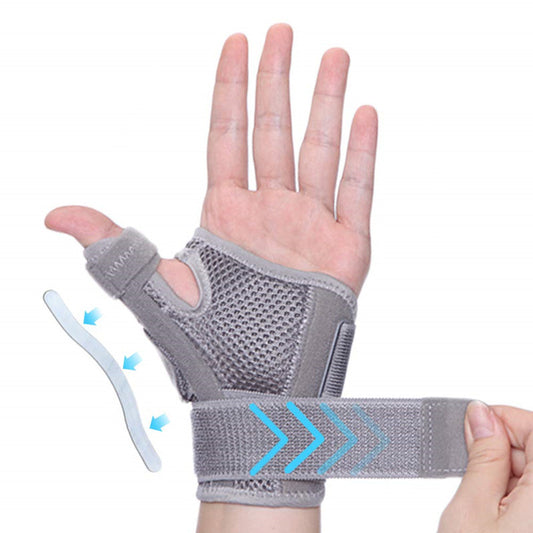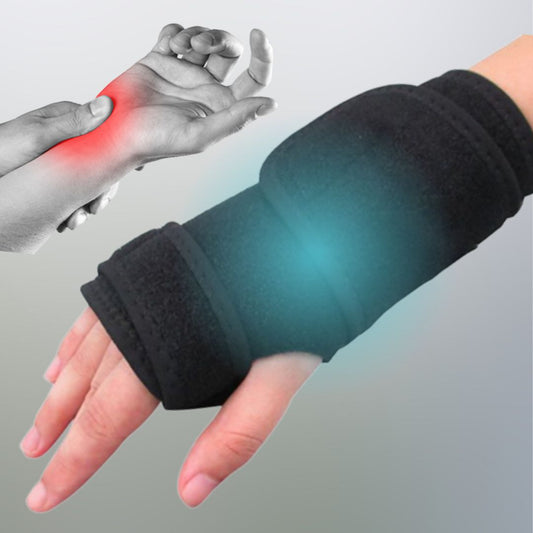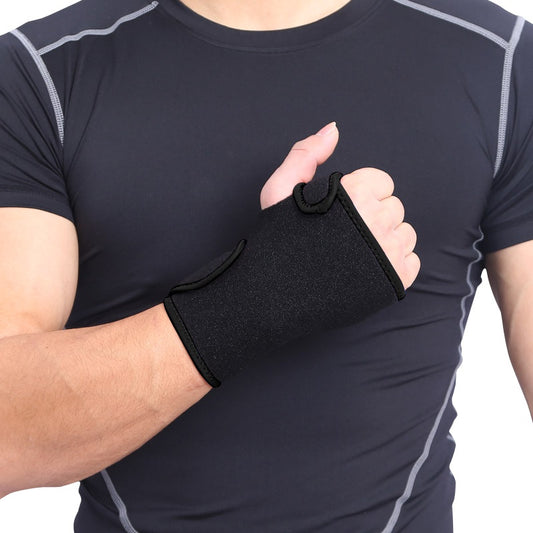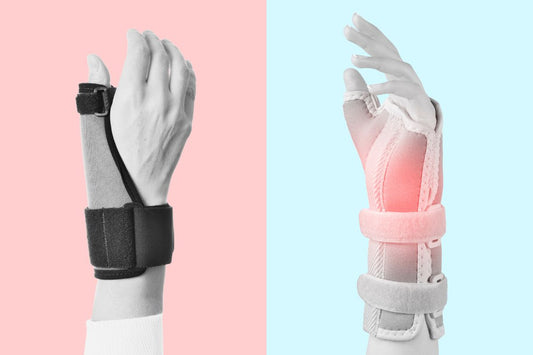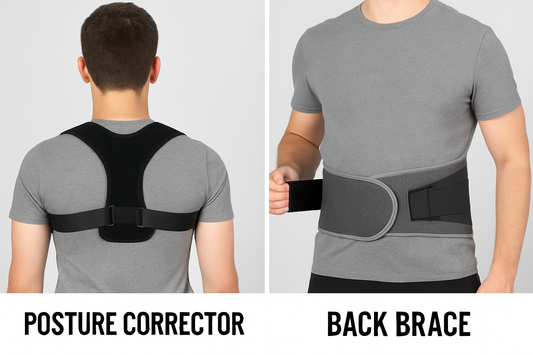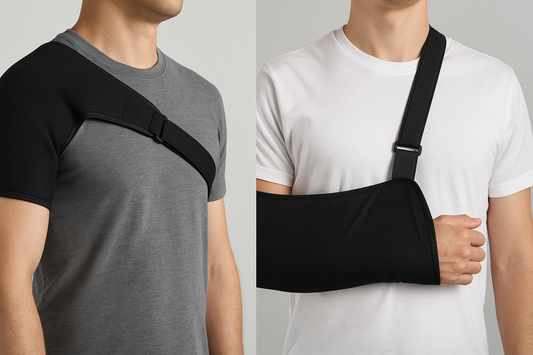From the dull, persistent ache of office workers to the sharp, tingling pain after a fall, wrist pain comes in many forms. This seemingly small joint plays a vital role in daily life, and when it hurts, even the simplest tasks can become frustratingly difficult.
Have you ever noticed how often you use your wrists each day—typing, cooking, carrying groceries, or even just reaching for a glass of water? Understanding the causes of pain is the first step toward long-term relief. While this article won’t give you an instant cure for wrist pain, it will provide practical, valuable insights to help you protect and care for your wrists.
Understanding Your Wrist: Basic Anatomy
Before rushing toward quick fixes, the most powerful step is understanding your body. The wrist’s intricate structure plays a key role in strength, flexibility, and daily function. Here’s how it’s built:
-
Eight Small Carpal Bones Arranged in Two Rows: Eight carpal bones form a stable yet flexible framework, allowing rotation, weight-bearing, and precise hand movements necessary for gripping, typing, or lifting without discomfort.
-
Multiple Ligaments Connecting These Bones: Strong ligaments, such as scapholunate and lunotriquetral, connect carpal bones, maintain joint stability, prevent dislocation, and reduce injury risks during lifting, sports, or repetitive daily activities.
-
Tendons That Attach Muscles to Bones: Flexor and extensor carpi tendons connect forearm muscles to wrist bones, enabling smooth flexion, extension, and rotation for precise, strain-free movements in daily tasks.
-
Nerves That Provide Sensation and Control Movement: The median, ulnar, and radial nerves control wrist movement and sensation, ensuring dexterity, grip strength, and preventing numbness through coordinated nerve function.
-
Blood Vessels Supplying Nutrients to the Area: Radial and ulnar arteries deliver oxygen and nutrients to wrist tissues, supporting repair, maintaining joint health, and ensuring optimal mobility over time.

Common Causes of Wrist Pain
When you dig deeper into the root causes, you’ll realize your wrist is more fragile than you think. There are dozens of factors that can cause damage to it, eventually leading to inconveniences in your daily life.
-
Carpal Tunnel Syndrome: Caused by pressure on the median nerve in the carpal tunnel, leading to tingling, numbness, burning in fingers, reduced grip strength, and difficulty performing fine motor tasks.
-
Wrist Tendonitis: Inflammation from repetitive movements like typing or gripping causes pain, swelling, and tenderness, sometimes accompanied by a popping or grinding sensation during wrist movement from tendon friction.
-
Arthritis in the Wrist: Osteoarthritis or rheumatoid arthritis damages joint cartilage, causing aching, stiffness (worse in mornings), swelling, and restricted motion; X-rays may reveal bone spurs or narrowing joint spaces.
-
Wrist Fracture (e.g., Scaphoid Fracture): Usually from falls on an outstretched hand, causing sudden pain, swelling, and tenderness at the thumb base, making gripping or wrist movement extremely painful.
-
Ganglion Cyst: A fluid-filled sac near wrist joints or tendons forms a visible bump, sometimes painful during extension or when pressing nearby nerves, impacting wrist comfort and function.
- Repetitive Strain Injury (RSI): Caused by repeated wrist motions in work or sports, leading to dull pain, intermittent tingling, and reduced grip strength, worsening over time without rest or intervention.
Self-Care Tips for Wrist Pain Relief
Prevention is better than cure—start caring for your wrists through the smallest habits in your daily routine.
-
Immediate Rest Needed: Resting the injured wrist is essential to prevent further strain and kickstart healing. Avoid activities that provoke discomfort or inflammation during the initial 24–48 hours. This aligns with established practices for acute soft tissue injuries.
-
Short Cold Application: Use a cold compress for 10–20 minutes, 3–4 times daily to soothe pain and temper swelling via vasoconstriction. Always wrap ice in a thin cloth to avoid skin damage.
-
Light Pressure Wrap: Gently apply an elastic bandage to support and reduce swelling—but ensure it's snug, not tight. If you experience numbness or color changes in your fingers, loosen the wrap immediately.
-
Raise for Relief: Elevate your wrist above heart level to promote fluid drainage and minimize swelling. Use cushions or pillows while resting or sleeping
-
Wrist Flexor Stretch: Extend your arm forward, palm up, and gently pull back your fingers with the opposite hand. Hold for 15–30 seconds. This stretch targets the muscles on your inner forearm, improving flexibility and reducing tension.
- Wrist Extensor Stretch: Extend your arm forward, palm down, and gently press the back of your hand toward your body. Maintain for 15–30 seconds. It helps loosen the muscles along your outer forearm and supports balanced wrist mobility.
Medical Treatment Options
If the pain strikes in an unusual way, don’t underestimate it or assume it will fade in a few days. You need more effective measures to protect the flexibility and strength of your wrist.
-
Immobilization: Wear a wrist brace or cast for 2–6 weeks to stabilize the joint. Immobilization reduces strain on tendons and ligaments, promoting healing for conditions like sprains or carpal tunnel syndrome.
-
Physical Therapy: Engage in guided exercises to strengthen wrist muscles and improve mobility. Physical therapy enhances flexibility and reduces pain, effective for tendonitis or post-injury recovery, tailored by a therapist.
-
Corticosteroid Injections: Receive steroid injections to reduce inflammation in the wrist joint. These injections provide quick relief for tendonitis or arthritis, but repeated use may weaken tissues, requiring medical supervision.
- Surgery: Undergo procedures like carpal tunnel release or ligament repair for severe cases. Surgery addresses persistent pain or structural damage, offering long-term relief when conservative treatments fail.
Preventing Wrist Pain
It’s time to embark on a major self-improvement effort. The steps below are neither difficult nor time-consuming, but once they become habits, your worries about wrist pain will ease significantly.
-
Ergonomic Adjustments: Choose wrist-neutral keyboards, keep your chair at the right height, and ensure your monitor is at eye level.
Steps: Keep wrists straight while typing, adjust chair height so elbows form a 90° angle, and align the screen to reduce neck and wrist strain. A proper workstation setup significantly lowers the risk of tendonitis and carpal tunnel.
-
Work Habits: Schedule short breaks every hour to give your wrists a rest.
Steps: Take 5 minutes to stretch your wrists, rotate hands gently, and shake out tension. Regular breaks prevent overuse injuries and keep joints mobile—especially important during long work or gaming sessions.
-
Grip Strengthening: Use a stress ball or grip trainer daily to build supportive muscle strength.
Steps: Squeeze for 5 seconds, relax, and repeat 10–15 times. Stronger grip muscles stabilize the wrist, reducing strain from lifting, carrying, or typing.
-
Wrist Curls: Strengthen forearm and wrist muscles with light weights (1–2 kg).
Steps: Sit with forearms supported, curl wrists up and down slowly for 10 reps, rest, and repeat. Controlled motion prevents joint overload and improves resilience against repetitive stress.
When to See a Doctor
- Last but not least, when all preventive measures still can’t shield you from sudden, severe wrist pain, seeing a doctor is the best choice to get immediate advice for your condition. But when exactly should you seek medical attention.
-
Severe pain, especially following an injury: Sudden, intense wrist pain after
trauma may indicate a fracture, ligament tear, or other serious injury requiring prompt medical evaluation.
-
Visible deformity or abnormal angle of the wrist: Any unnatural bend, lump, or visible bone displacement suggests a possible fracture or dislocation that should be examined immediately by a healthcare professional.
-
Inability to move your wrist or fingers: Loss of mobility can indicate severe joint damage, tendon rupture, or nerve compression, warranting urgent medical assessment to prevent long-term impairment.
-
Numbness or tingling that doesn’t improve with rest: Persistent tingling, burning, or loss of sensation could signal nerve compression, such as carpal tunnel syndrome, requiring early intervention to avoid permanent nerve damage.
-
Swelling that doesn’t subside after 48 hours of home treatment: Continued swelling despite rest, ice, and elevation may indicate internal damage, infection, or fracture needing diagnostic imaging and treatment.
-
Pain that interferes with sleep or daily activities: Ongoing discomfort disrupting normal function could point to underlying joint, tendon, or nerve issues that benefit from targeted medical care.
- Symptoms that persist for more than two weeks despite self-care: If pain, swelling, or weakness does not improve within 14 days, a professional assessment is necessary to identify and treat the root cause.
Frequently Asked Questions About Wrist Pain
1. How do you relieve wrist pain?
Start with the RICE method to control swelling and pain. Use a wrist brace for support and perform gentle stretching once acute pain subsides. If pain persists, consult a healthcare provider for further evaluation.
2. What is the cause of wrist pain?
It can result from repetitive strain, injury, nerve compression, arthritis, cysts, or fractures. A proper diagnosis requires physical examination and, in some cases, imaging tests.
3. How to massage wrist pain?
Use your opposite hand or a massage tool to apply gentle circular pressure to the forearm muscles and wrist joint. Focus on releasing tension without pressing directly on swollen or injured areas. Combine massage with stretching for better results.


